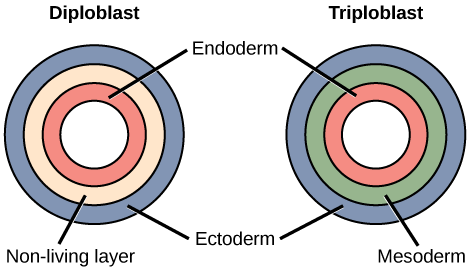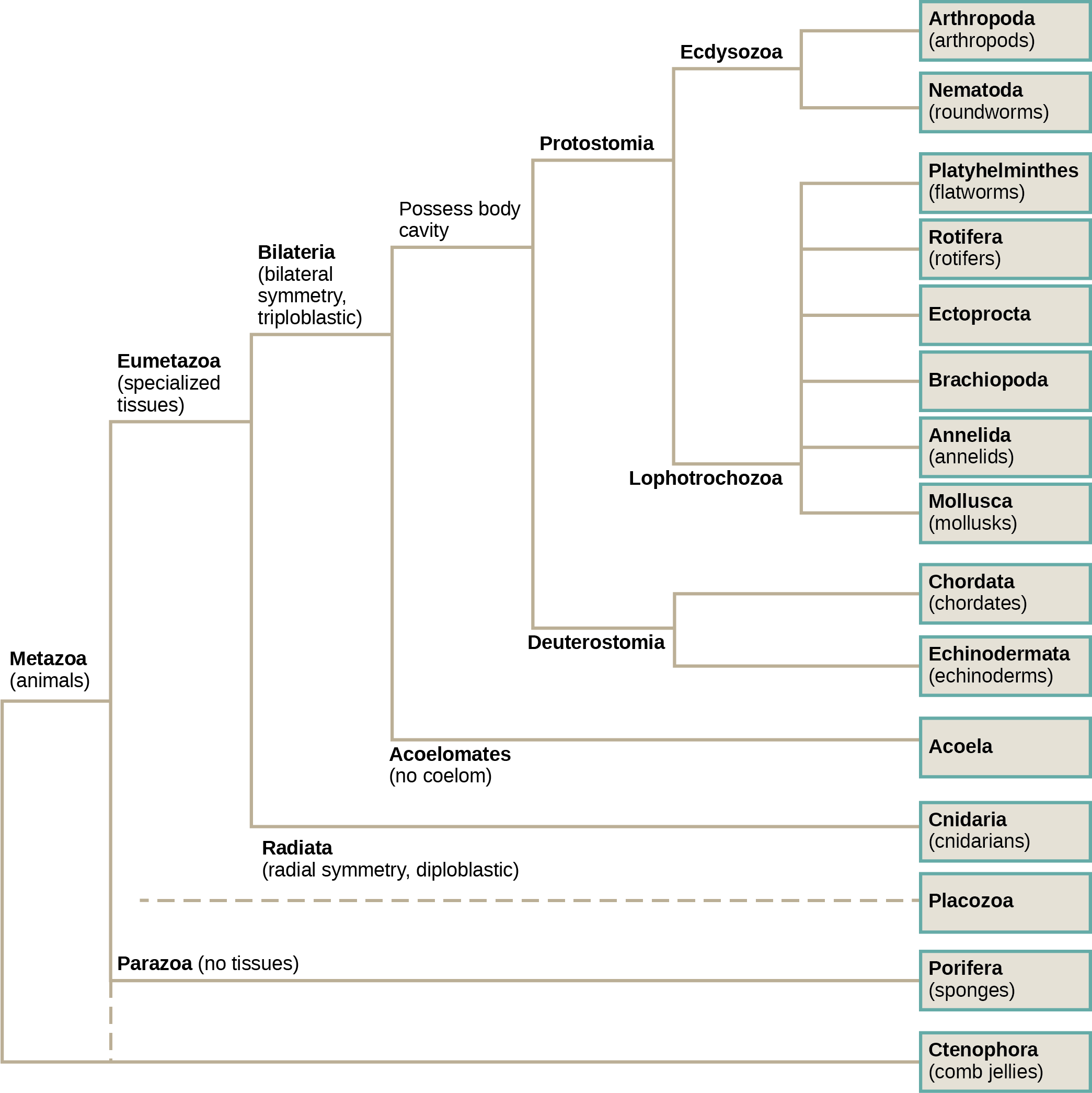Select the correct statements about animal body plans. Identify the features that distinguish animals from organisms in other multicellular kingdoms.
An example of an asymmetrical animal is a sponge.

. Asymmetrical animals are animals with no pattern or symmetry. In both protostomes and deuterostomes the blastopore develops into the mouth. Animals are ingestive heterotrophs.
The following statements accurately describe animals. Sketch your whole specimens and annotate. Animal Body Planes and Cavities.
For example a dog would represent bilateral symmetry while a jellyfish and other cnidarians would represent A. Animal body plans follow set patterns related to symmetry. Learn about body plans the types of body symmetry body cavities and tissues and.
Question and answer. Symmetry refers to balanced proportions or correspondence in size and shape of. Select all that apply.
But all vertebrate animals are equipped with some combination of mouths throats stomachs intestines and anuses or cloacas as well as organs such as the liver and pancreas that secrete digestive enzymes. A key feature of animal body plans is that they can show multiple types of symmetry. Identify the features that distinguish animals from organisms in other multicellular kingdoms.
They are asymmetrical radial or bilateral in form as illustrated in the figure above. Select the correct statement s. Select the correct statement s about animal body plans.
A All triploblastic animals possess a coelom. Three main body planes of animal with respect to the cavities are a Acoelomates Triploblasts that do not develop a coelom are called acoelomates. Select all that apply.
Because one line can be drawn to divide it into two halves that are mirror images a butterfly has. A key feature of animal body plans is that they can show multiple types of symmetry. Detail the types of body symmetry.
An important way in which the body plan of mollusks differs from that of arthropods is. All animals have cells that contains a nucleus and organelles. The average daily rate of energy consumption is about two to four times an animals BMR or SMR.
All triploblastic animals possess a coelom. Flatworms in the phylum Platyhelminthes are. Their mesoderm region is completely filled with tissue.
Ruminant mammals such as cows have four stomachs in order to efficiently digest fibrous plants. Select the correct statement s about animal body plans. For example a dog would represent bilateral symmetry while a jellyfish and other Cnidaria would represent.
A All triploblastic animals possess a coelom. Radial symmetry as illustrated in the figure above describes when an animal has an up. Up to 24 cash back Members of the phylum have no body symmetry.
Select all that apply 10 points Check All. Select all that apply. All animals are eukaryotes this means that they have cells that are highly organised and their cells contained membrane bounded.
Define terms used to. The water vascular system of echinoderms. The evolutionary distributions of these body plans are shown in Figure 9-9.
C Development in all animals is determined by the unique family of Hox genes or other similar homeobox genes. Week 6 quizzes. Both and are segmented protostomes with bilateral symmetry.
Animal body plans follow set patterns related to symmetry. Humans are more sedentary than most animals and have an average daily rate of only 15 times the BMR. Animals in the phylum have specialized cells and tissues but no organs.
All animals are multi cellular. For example a dog would represent bilateral symmetry while a jellyfish and other. Discuss animals that have and do not have a body cavity.
All animals must maintain stable internal conditions. Select the correct statement about the evolution of animals. We review their content and use your feedback to keep the quality high.
Major evolutionary innovations in the forms of animals include multicellularity bilateral symmetry tubewithin- a-tube plan and eucoelomate true coelom body plan. Development in all animals is determined by the unique family of Hox genes or other similar homeobox genes. B In both protostomes and deuterostomes the blastopore develops into the mouth.
Biology Chapter 32 Exercise. Log in for more information. 36958 in the upper right hand.
This answer has been confirmed as correct and helpful. The oldest generally accepted fossils of large animals range in age from 565 to 550 million years old. A key feature of animal body plans is that they can show multiple types of symmetry.
The body plans of animals have different classifications and features that are affected by various factors. A jellyfish has_____ symmetry because many lines can be drawn to divide its body into two halves that are mirror images. Radial symmetry as illustrated in Figure 6 describes when an animal has an up-and-down.
They are asymmetrical radial or bilateral in form as illustrated in Figure 6. An example of an asymmetrical animal is a sponge. Select the correct statement s about animal body plans.
The more active an animal is the more energy is needed to maintain that activity and the higher its BMR or SMR. In addition to echinoderms are also deuterostomes. For example a dog would represent bilateral symmetry while a jellyfish and other cnidarians would represent A.
Asymmetry is only found in Parazoa. Describe what makes up an animals body plan. Asymmetrical animals are animals with no pattern or symmetry.
In Figure 338 in your textbook assume that the two medusae shown at step 4 were produced by one polyp colony.

Body Plans Biology For Majors Ii

Features Used To Classify Animals Biology 2e

Solved Which Of The Following Statements Is Correct See Chegg Com

Structure Function Of Plants Animals Science Lesson For Kids

Features Used To Classify Animals Biology 2e
Features Used To Classify Animals Biology Ii


0 comments
Post a Comment